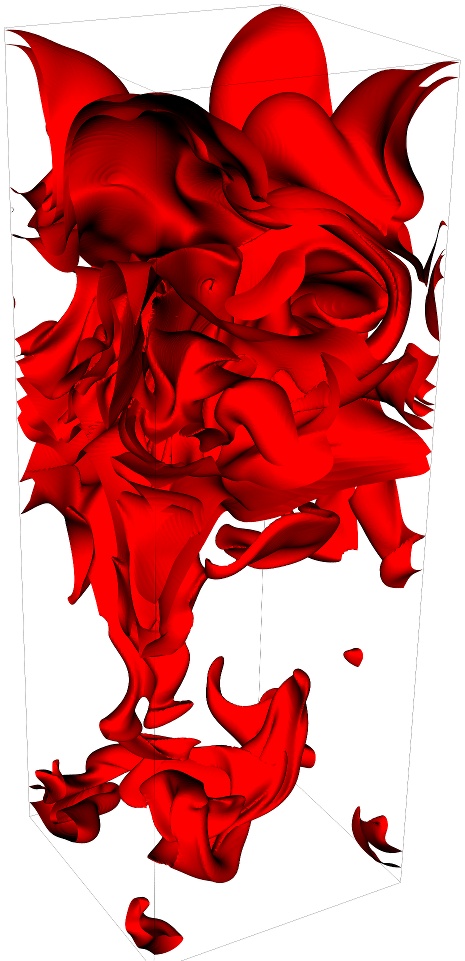Rayleigh-Taylor Unstable Flames: Connecting Local and Global Properties

The goal of this research project is to understand how the Rayleigh-Taylor instability, self-generated turbulence, and burning set the global flame speed and flame width of Rayleigh-Taylor unstable flames. I've shown that the flame speed is typically higher than the Rayleigh-Taylor flame speed model predicts, and that RT unstable flames are thinned and then thickened as the strength of the RT instability increases. I continue to investigate these two surprising findings by measuring local properties of the flame structure and then using these local measurements to better understand the global flame behavior. An understanding of how the global flame speed is set should lead to more accurate subgrid models for full star Type Ia simulations. An investigation of the flame width should shed further light on the trigger for Type Ia explosions. In addition, the methods and ideas developed for this project could be useful for efficient aviation engine design, and to the general study of turbulent combustion, fluid instabilities, and the ablative RT instability, which is of key importance in laser-driven fusion experiments. This project currently uses ACCESS supercomputing resources Stampede3, Ranch, and Expanse, the open source spectral element code Nek5000, and the visualization tool VisIt.
People
Publications
- E. P. Hicks, Rayleigh–Taylor unstable flames at higher Reynolds number, 2019, Monthly Notices of the Royal Astronomical Society, Volume 489, Issue 1, October 2019, Pages 36–51. [pdf] [link]
- E. P. Hicks, Rayleigh-Taylor Unstable Flames -- Fast or Faster?, 2015, The Astrophysical Journal, 803, 72. [pdf] [link]
- E. P. Hicks, A shear instability mechanism for the pulsations of Rayleigh–Taylor unstable model flames, 2014, Journal of Fluid Mechanics, 748, 618-640. [pdf] [link]
- E. P. Hicks and R. Rosner, Gravitationally Unstable Flames: Rayleigh-Taylor Stretching Versus Turbulent Wrinkling, 2013, The Astrophysical Journal, 771, 135. [pdf] [link]
- Elizabeth Hicks and Robert Rosner, The effects of burning on the development of 2D turbulence, 2010, Physica Scripta, Vol. 2010, T142, 01404.
